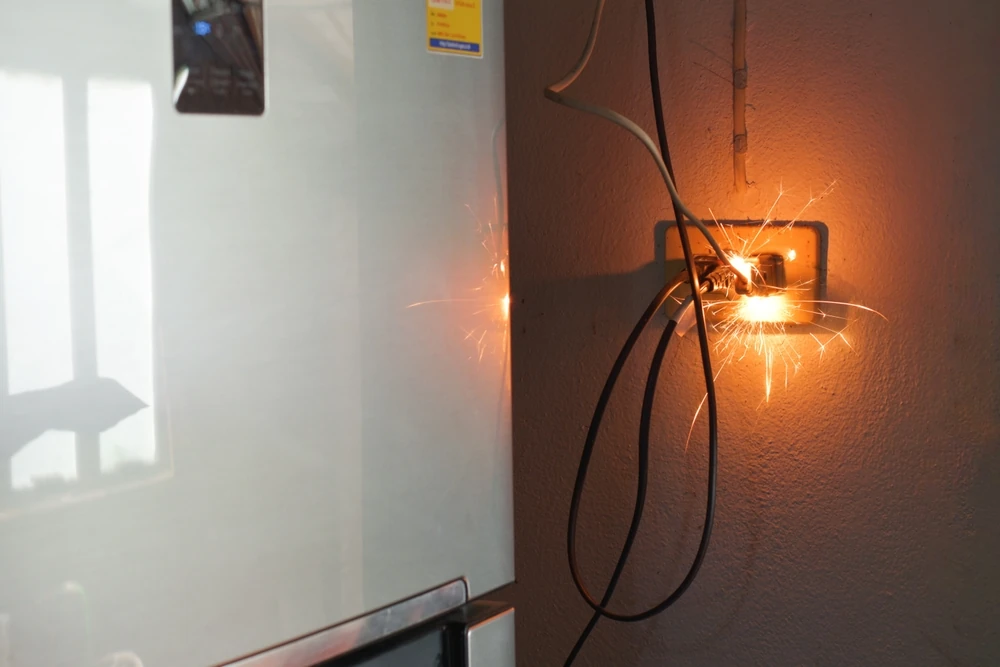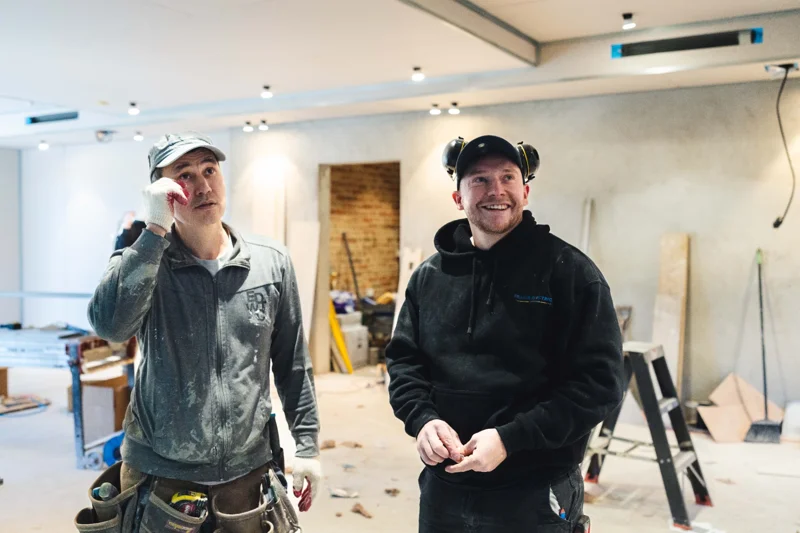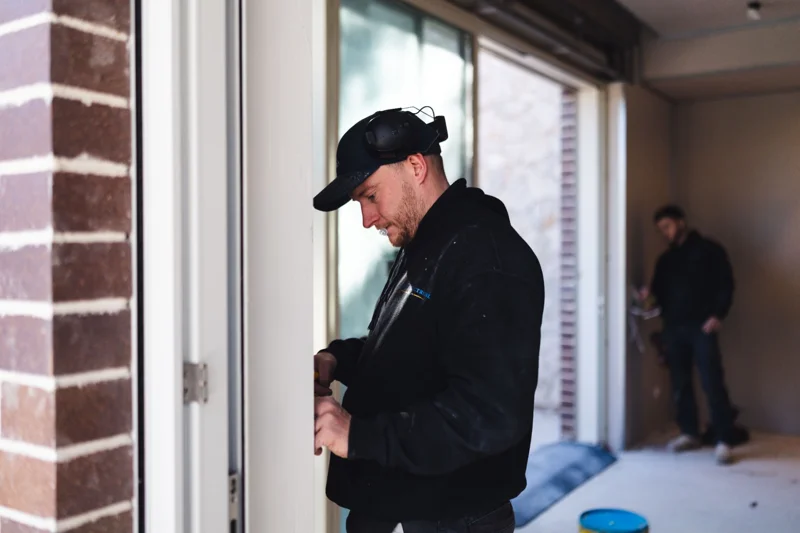Many homeowners take pride in tackling small home improvement projects themselves. Painting walls, fixing leaks, or assembling furniture can be satisfying and cost-effective. But when it comes to electrical work, the risks far outweigh the rewards. What starts as a quick DIY fix can easily turn into a fire hazard or cause serious injury. As a trusted residential electrician in Central Coast, Fraser Electrical has seen firsthand how unlicensed electrical work often leads to expensive damage and dangerous situations that could have been avoided with professional help.
Electrical systems are far more complex than most people realise. They require technical expertise, specialised tools and a deep understanding of safety standards to function correctly. In this article, we’ll explain why attempting electrical repairs yourself often costs more in the long run and how choosing a licensed electrician keeps your home safe, compliant and reliable.

Electricity may seem simple. After all, it powers your lights, outlets and appliances every day without issue. However, what lies behind your walls is an intricate system of circuits, grounding paths and safety devices designed to work in harmony. When homeowners attempt DIY repairs without training or equipment, that delicate balance can easily be disrupted, leading to severe hazards.
One of the immediate and severe dangers of DIY electrical work is the risk of electric shock or fire. Electricity is invisible but incredibly powerful; a small lapse in judgement or a misplaced wire can turn an ordinary afternoon project into a life-threatening emergency. Many homeowners underestimate just how much current runs through everyday outlets and switches. Unlike other trades, electrical mistakes don’t offer second chances; one spark, one exposed wire or one poorly connected terminal can be enough to ignite flammable materials inside your walls.
One underestimated aspect of DIY electrical work is the absence of proper safety equipment. Professional electricians don’t just bring knowledge; they bring specialised gear designed to protect them and your property. Insulated gloves, voltage detectors, residual-current devices (RCDs) and lockout systems all exist for a reason: to prevent injury and ensure circuits are truly safe to work on. Homeowners, however, often rely on generic hand tools from hardware stores, unaware that even a screwdriver without proper insulation can conduct lethal voltage.
Many homeowners start a DIY electrical project with good intentions: a desire to save money, learn new skills or quickly fix a minor issue. However, what seems like a simple task often spirals into a series of costly and dangerous mistakes. Electrical systems are far more complex than most people realise; even a seemingly minor wiring error can create risks that don’t surface until months later. As experts, we frequently encounter homes where well-meaning owners have unknowingly created hazards through small oversights.
Electrical codes may seem like complicated paperwork or bureaucratic red tape, but in reality, they are the foundation of electrical safety. These codes, such as AS/NZS 3000:2018 (Wiring Rules), exist to protect homeowners, tenants and electricians from preventable accidents. They dictate how circuits should be designed, installed and tested to ensure safe operation under normal and fault conditions. Here’s why compliance with electrical codes is non-negotiable:
While saving money might be the main reason homeowners attempt electrical repairs themselves, the long-term financial impact tells a different story. A single wiring error can damage appliances, reduce efficiency or even render your insurance void, costing thousands to fix later.
When circuits are poorly connected or wiring is mismatched, electrical resistance builds up within the system. This resistance wastes energy as heat, forcing your devices, lighting and even switchboards to work harder than necessary. The result is a less efficient home that consumes more power and experiences faster component wear. These inefficiencies add up over the months, often costing far more in electricity bills than the initial savings from avoiding a licensed professional.
Many are unaware that policies and manufacturer guarantees require all electrical work to be carried out by a licensed professional. When unlicensed repairs are discovered after an accident or inspection, insurers are quick to deny claims, regardless of how minor the fault may seem. The consequences can be financially devastating, particularly when major assets are involved. In extreme cases, homeowners may even be held personally liable for damages to neighbouring properties or injuries sustained by others.
What begins as a small repair to “avoid the call-out fee” can evolve into a far more expensive problem that demands full system replacement. The difference between repair and replacement costs in electrical work isn’t just about materials or labour; it’s about the hidden damage caused by improper techniques, incompatible components or untested circuits. These not only increase the likelihood of repeated breakdowns but can also lead to full rewiring or equipment replacement later on. Here’s how unlicensed electrical work often inflates long-term repair and replacement costs:
Perhaps one of the most underestimated consequences of DIY electrical work lies in the fine print of policies and legal liability. Many assume their home insurance automatically covers accidents or fire damage, but what they don’t realise is that insurers almost always require proof that all electrical work was performed by a licensed professional. Without that certification, any claim related to electrical faults can be denied outright, leaving homeowners to shoulder the full cost of repairs, replacements and rebuilding. Here’s why DIY electrical work can quickly lead to insurance and liability nightmares:

There’s a fine line between what homeowners can safely do on their own and what requires the expertise of a licensed electrician. Replacing a light bulb or resetting a tripped breaker is one thing, but when electrical issues involve wiring, circuits or connections, even the smallest mistake can put your home and family at serious risk. Many DIY repairs start with good intentions but end with flickering lights or electrical fires that could have been prevented with professional help. Recognising the warning signs early and knowing your limits as a homeowner is the key to keeping your electrical system safe, compliant and reliable. The following sections outline when it’s time to call in a licensed professional and why doing so can protect your home and your peace of mind.
It’s natural for homeowners to want to take an active role in maintaining their property. After all, small repairs and routine upkeep are part of responsible homeownership. However, when it comes to electrical systems, there’s a clear distinction between basic maintenance and specialised electrical work that demands professional expertise. Swapping a light bulb or resetting a breaker might be safe, but anything that involves wiring, circuits or electrical panels carries risks if performed without the right training and certification. If a project involves cutting, connecting or altering electrical wiring in any way, it’s time to call a professional. A licensed electrician ensures that every connection operates safely and efficiently.
Electrical systems are designed to work quietly in the background, powering your home reliably without drawing attention. When something feels off, it’s your home’s way of warning you that something isn’t right. These warning signs are often subtle at first but can quickly escalate into serious hazards if ignored. Unfortunately, many homeowners attempt temporary fixes or dismiss these red flags as “normal”, not realising that they often signal overloaded circuits or faulty connections. The key is to act before small issues turn into emergencies. Ignoring the signs or resorting to DIY “quick fixes” often leads to greater risks down the track. Remember, recognising red flags early can prevent disaster.
When you hire a licensed electrician, you’re not just paying for labour; you’re investing in expertise, safety and long-term assurance. Licensed professionals bring years of training and an in-depth understanding of electrical codes and safety standards that untrained individuals simply don’t have. Beyond the technical skill, hiring an expert means gaining access to certified workmanship that’s fully tested and compliant with Australian regulations. Most importantly, hiring a qualified electrician protects your family’s safety. Electrical accidents are almost always preventable with proper installation and maintenance. By relying on professionals, you’re ensuring top-quality results and preserving your home’s integrity and compliance with national electrical standards.
Just like your car requires routine servicing to stay reliable, your electrical system needs regular maintenance to prevent problems before they start. Over time, wiring can deteriorate, switchboards can age and circuits can become overloaded as new appliances and devices are added. Without proactive checks, these small issues can quietly evolve into major risks that compromise both safety and performance. In the following sections, we’ll explore how routine inspections, strategic upgrades and simple daily safety habits can help you maintain a safe, reliable and efficient electrical system year after year.
Even the most well-installed electrical system requires periodic checkups to stay safe and efficient. Eventually, exposure to heat, moisture, vibration and constant usage can wear down insulation and weaken switchboard components. These changes are often invisible to homeowners, yet they can increase the risk of system failure if left unchecked. Regular professional inspections ensure that every part of your electrical network continues to perform within safe operating limits. What regular inspections typically involve:
Electrical systems age just like every other part of your home. Wiring that was once considered safe may no longer meet modern standards or handle the demands of today’s high-powered appliances and technology. Homes built more than 20 years ago are particularly at risk, as they often contain aluminium or cloth-insulated wiring that deteriorates. These older materials can become brittle, corroded or overloaded, increasing the likelihood of short circuits and electrical fires. When wiring upgrades should be considered:
Preventative maintenance isn’t just about scheduled inspections; it’s also about developing smart day-to-day habits that keep your electrical system in top condition. Simple actions can make a major difference in reducing fire and shock risks. Electrical safety should be part of your household routine, especially in homes with children, elderly residents or pets. Practical electrical safety habits to adopt daily:

In Australia, electrical work is a regulated trade for good reason: even minor mistakes can result in fires, injuries or deaths. Because of these risks, state and territory governments strictly enforce licensing laws to ensure that all electrical work is carried out by qualified, insured and accredited professionals. Understanding the legal framework and its implications helps homeowners appreciate why hiring a professional is safer and legally essential. In the following sections, we’ll explore how unlicensed electrical work breaches state laws, what liability homeowners face when accidents occur and why compliance is the foundation of electrical safety and long-term protection.
Every state and territory enforces strict legislation that limits electrical work to licensed professionals only, meaning that even seemingly simple tasks are illegal without proper certification. These laws exist to protect homeowners and the public from electrical hazards. What’s important to understand is that these laws are not meant to discourage home maintenance; they’re designed to prevent dangerous work that endangers lives and property. Key legal implications of breaching licensing laws:
The consequences of DIY electrical work extend far beyond fines; they can carry devastating personal and financial repercussions when things go wrong. Unlike other household repairs, electrical faults can easily spread beyond the immediate area, damaging neighbouring properties or injuring other occupants. Liability laws' responsibility extends to landlords and business owners as well, who are legally obligated to maintain safe electrical installations for tenants and staff. Potential liabilities of unlicensed electrical work:
Australia has some of the most comprehensive electrical safety standards. These are not arbitrary rules but carefully developed guidelines that reflect decades of engineering research, safety testing and field experience. They exist to ensure that every wire, switchboard and circuit installed in homes performs safely and reliably. Here’s why compliance is essential:
DIY projects can be fun and fulfilling. But when it comes to electricity, even small mistakes can have massive repercussions. Between safety risks, legal fines and hidden repair costs, doing it yourself often becomes the most expensive route. By trusting licensed experts like us here at Fraser Electrical, you’re not just paying for a service; you’re investing in long-term safety, compliance and peace of mind. Our electricians will ensure that your home’s electrical systems remain safe, efficient and compliant with every regulation.